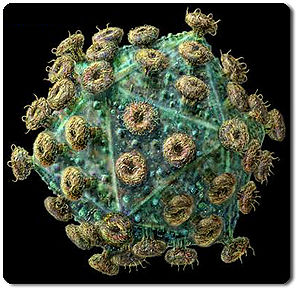HIV/AIDS and Women's Health
Introduction
Kirkley Doyle
What public health question do you raise? Whose health is affected; in what country or location? What disease organisms are involved?
Below are some sample codes that will be useful for your paper.
Viral Structure
Human Immunodeficiency virus or HIV/AIDS (Acquired Immunodeficiency Virus-a later developed stage of the virus) is a retrovirus. The virus has RNA genome which is transcribed into DNA through the process of reverse transcriptase. The DNA then enters the nucleus of healthy human cells and diverts the cell’s processes to continually make more virus particles. HIV is transmitted from host to host through bodily fluids blood, breast milk, and sexual fluids. Direct blood to blood contact has a 90% transmission rate, pregnancy-mother to child while the child is in the uterus, breast milk ingested by an infant has a 10% transmission rate, insertive intercourse has a 1% transmission rate, receptive intercourse has a .1% transmission rate and oral contact has an extremely low transmission rate. HIV binds to CD4 receptors on T cells in the immune system, so slowly over time the virus attacks the entire immune system. Once the T cell count gets below a certain number, the virus is called AIDS. While the immune system is weakened by the virus, the body develops what are called opportunistic infections, ailments that occur because the weakened immune system cannot fight them off. The individual infected with HIV/AIDS dies eventually from the opportunistic infections, instead of the virus itself. Opportunistic infections can be anything from yeast infections to influenza or deadly killing diseases like tuberculosis.br>

HIV/AIDS and Women
“The World Health Organization said that the AIDS virus is the leading cause of death and disease among women between the ages of 15 and 44[3].” HIV/AIDS among women in third world countries is such a huge problem for many reasons-physical aspects of viral transmission, lack of health care and protective sexual barriers and women’s placement in the global social hierarchy-underneath men. In much of the third world, girls and women are uneducated, undervalued and controlled by men. Sexual crimes and rape are often used to keep women in their place, and such crimes are large contributors to disease spread, especially HIV/AIDS. According to the U.N. agency, one in five deaths among women between the ages of 15 and 44 is linked to unsafe sex[3]. Unprotected sex is very dangerous as far as disease prevention, especially for women and when concerning HIV/AIDS. Vaginal tissues are extremely thin and sensitive. During sexual intercourse it is common for the tissues to have small breakage, which can cause women to contract sexually transmitted diseases and infections easily through unprotected sex. When a man, infected with HIV/AIDS, penetrates a woman’s vagina with his penis and there is no use of a sexual barrier, the chance of transmission is 1%. However, when a man penetrates a woman’s vagina with no use of sexual barrier and she is infected with HIV/AIDS the transmission rate is .1%. It is much more likely that a woman will contract especially HIV/AIDS but also other sexually transmitted diseases or infections from unprotected sex than a man.
HIV/AIDS, Women and Economics
Because women are grossly undereducated compared to men, their opportunities for earning money are extremely limited. If a woman’s male partner dies, especially a woman infected with HIV/AIDS, she will most likely lose all of her possessions and sometimes her children. She will likely have little education and no choice [2]. Often times women turn to prostitution as the only means of survival available to them, and they do not understand the risks of unprotected sex and the high disease contraction rates that prostitution poses. The prostitution industry is a major contributor to HIV/AIDS transmission. A lot of the time, many women have only prostitution to turn to as a means to support themselves and their families and they are uneducated about the risk of HIV/AIDS. Prostitution is dangerous as far as disease control because of high numbers of sexual partners but also lack of protection, and often times forceful or violent sexual intercourse. Many modern brothels, pimps and prostitutes themselves do not insist upon condom use-the client will pay more if he does not have to wear a condom. And, the women do not tell anyone about the violence that happens in their jobs in fear of losing their job.
Sample Section 4
Conclusion
Overall paper length should be approximately 2,000 to 2,500 words.
Include at least two data figures.
Use professional sources, including at least two research studies.
References
1. [1]
2. [2]
3. [3]
4. [Class notes]
Edited by student of Joan Slonczewski for BIOL 191 Microbiology, 2009, Kenyon College.
